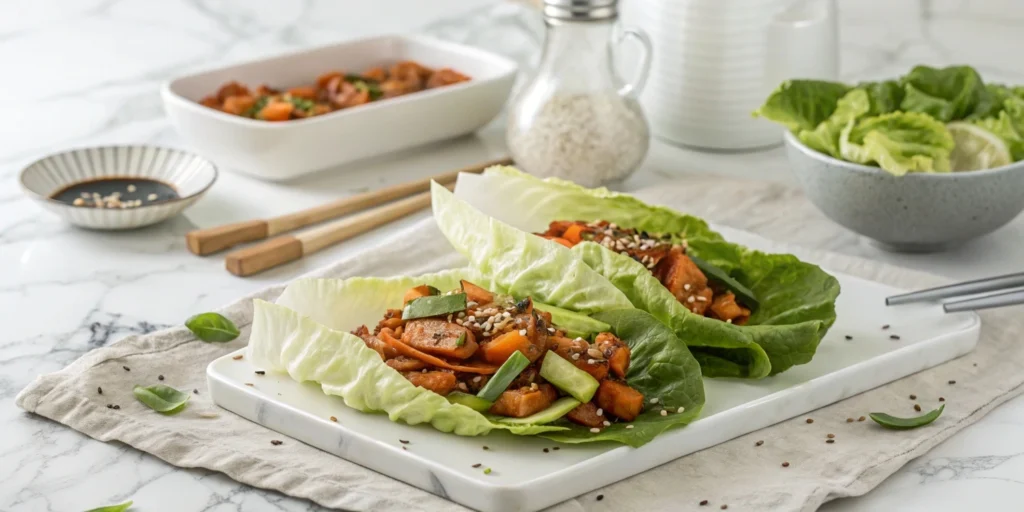
Table of Contents
Dakgalbi (닭갈비) is one of those dishes that immediately transports you to the heart of Korea’s bustling street food scene. A sizzling stir-fry made with tender chicken, vegetables, and spicy gochujang, this dish has captivated food lovers around the world. But what happens when you wrap all those delicious flavors in a crisp lettuce leaf? You get the Dakgalbi Wrap, a fresh, healthy take on this Korean classic that’s perfect for any meal.
I first encountered Dakgalbi in my grandmother’s cozy kitchen, where the aroma of sizzling chicken and the warmth of family created the perfect setting for enjoying this iconic dish. It quickly became one of my favorites, and now, I’m excited to share this easy-to-make recipe with you.
Whether you’re a Korean food aficionado or someone looking to try something new, the Dakgalbi Wrap is a must-try. It’s not only bursting with flavors but also offers a lighter, healthier twist by using lettuce as a wrap. Let’s dive into why you’ll love it, how to make it, and the nutritional benefits of this fantastic dish.
What is a Dakgalbi Wrap?
Dakgalbi (닭갈비) is traditionally a spicy stir-fried chicken dish that originated in the city of Chuncheon, South Korea. The dish is made by marinating boneless chicken in a spicy, savory sauce made from gochujang (Korean chili paste), soy sauce, sesame oil, garlic, and other seasonings. The chicken is then stir-fried along with vegetables like sweet potatoes, cabbage, and rice cakes, all cooked together on a sizzling hot plate.
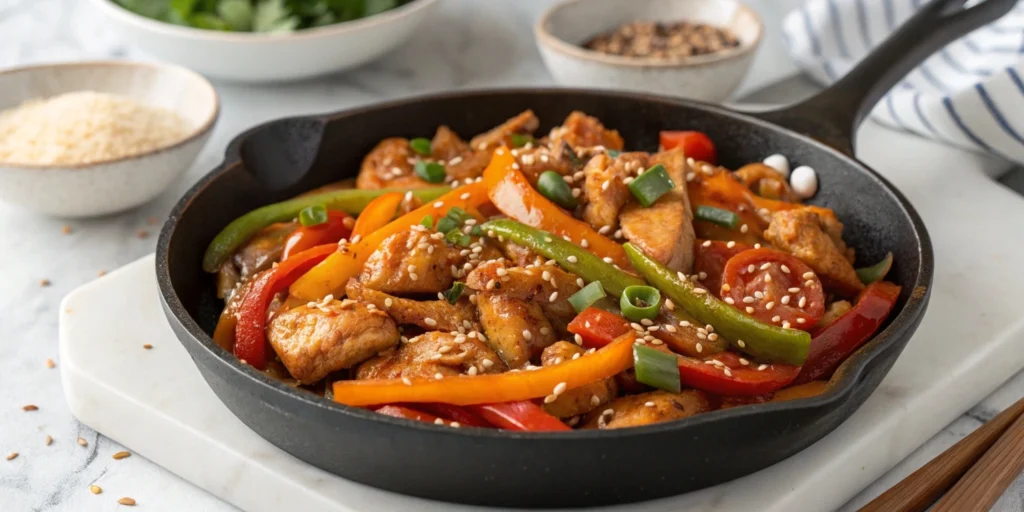
In the case of the Dakgalbi Wrap, the concept is the same, but instead of serving the dish over rice, you wrap the flavorful chicken and vegetables in fresh lettuce leaves. The wrap concept adds a fresh, crunchy contrast to the spicy, savory chicken and creates a healthier, lighter alternative to the traditional version.
Why Dakgalbi Wraps Are a Must-Try
The Dakgalbi Wrap isn’t just delicious—it’s also versatile and healthier than you might think. Here are a few reasons why you should add this dish to your recipe collection:
1. Bold Flavors
One of the reasons Dakgalbi is so loved is because of its deep, satisfying flavor profile. The combination of gochujang, soy sauce, garlic, sesame oil, and ginger creates a spicy yet umami-rich sauce that perfectly coats the chicken. The addition of sweet vegetables like carrots and bell peppers balances the heat and adds natural sweetness to each bite.
2. Healthy and Low-Carb
By swapping out rice or noodles for lettuce, the Dakgalbi Wrap becomes a low-carb, gluten-free option that’s perfect for those on keto or paleo diets. The lettuce wraps add crunch and freshness without adding extra calories, making this dish a great choice for anyone looking to enjoy a delicious meal without the guilt.
3. Customizable
One of the best things about Dakgalbi wraps is how easily you can modify them to suit your tastes. You can adjust the spice level by using more or less gochujang. You can also experiment with different vegetables, such as cucumbers, radishes, or avocado, for added flavor and nutrition. Even the protein is flexible—feel free to swap out the chicken for tofu, shrimp, or beef if you prefer.
4. Fun to Make and Eat
There’s something so satisfying about assembling your own wrap, making the meal feel interactive and fun. The crisp lettuce serves as the perfect vessel for the flavorful, tender chicken, while the fresh veggies add a delightful crunch. Each bite is a burst of flavor, and the best part is, you can customize it exactly how you like it.
Key Ingredients for a Perfect Dakgalbi Wrap
To make this recipe, you’ll need some key ingredients that bring the dish to life. Here’s what you’ll need:
For the Dakgalbi Chicken Marinade:
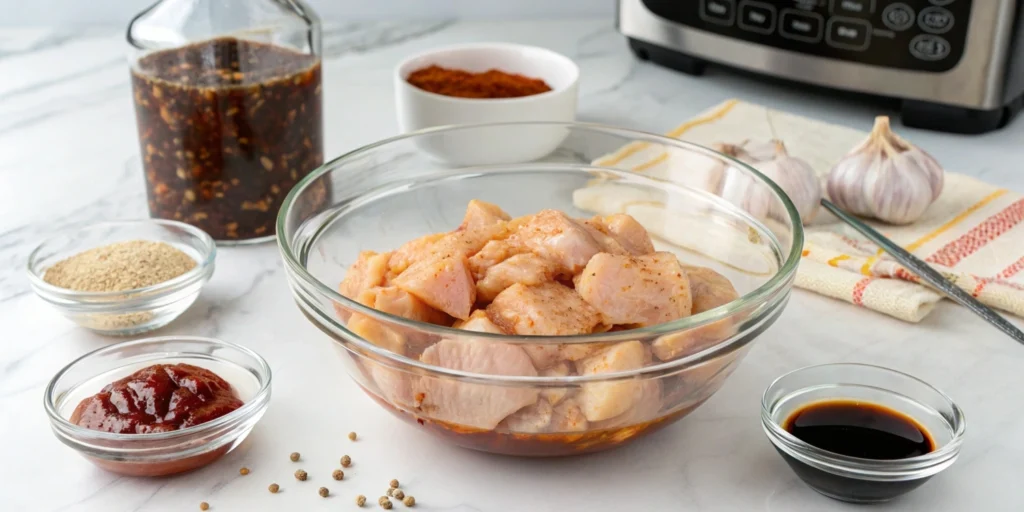
- 1 pound (450g) boneless chicken thighs, chopped into small pieces.
- 3 tablespoons gochujang (Korean chili paste)
- 2 tablespoons soy sauce
- 2 tablespoons sesame oil
- 2 cloves garlic, minced
- 1-inch piece of ginger, minced
- 1 tablespoon honey or brown sugar
- 1 tablespoon rice vinegar
- 1 teaspoon sesame seeds (optional)
For the Wrap:
- 1 head of butter lettuce or Romaine, washed and separated into leaves (about 10-12 leaves)
- 1 cup sliced vegetables, such as carrots, cucumber, or bell peppers
- Optional toppings: kimchi, chopped scallions, or toasted sesame seeds
For the Garnish:
- Kimchi (optional, for an extra kick)
- Chopped scallions (for garnish)
- Sesame seeds (optional, for garnish)
How to Make Dakgalbi Wraps at Home
Making Dakgalbi Wraps is simple and straightforward. Follow these easy steps to enjoy a restaurant-quality dish in the comfort of your own kitchen.
Step 1: Marinate the Chicken
To start, combine the gochujang, soy sauce, sesame oil, garlic, ginger, honey (or brown sugar), and rice vinegar in a bowl. Stir everything together until it forms a smooth marinade. Add the chicken pieces to the bowl and toss them well to coat in the marinade. Cover and let the chicken marinate in the fridge for at least 30 minutes, or ideally, overnight. The longer it marinates, the more flavor the chicken will absorb.
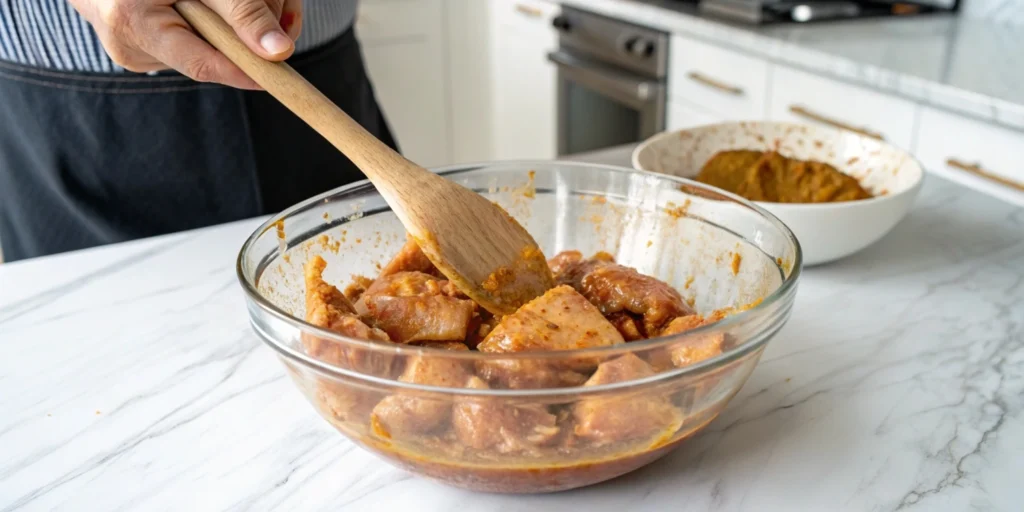
Step 2: Cook the Chicken
Once the chicken is marinated, heat a large skillet or wok over medium-high heat. Add a little bit of oil to the pan, then cook the chicken in batches to avoid overcrowding the pan. Sauté the chicken for about 6-8 minutes, stirring frequently, until it’s cooked through and lightly caramelized. The sauce should thicken as it cooks, creating a flavorful glaze over the chicken.
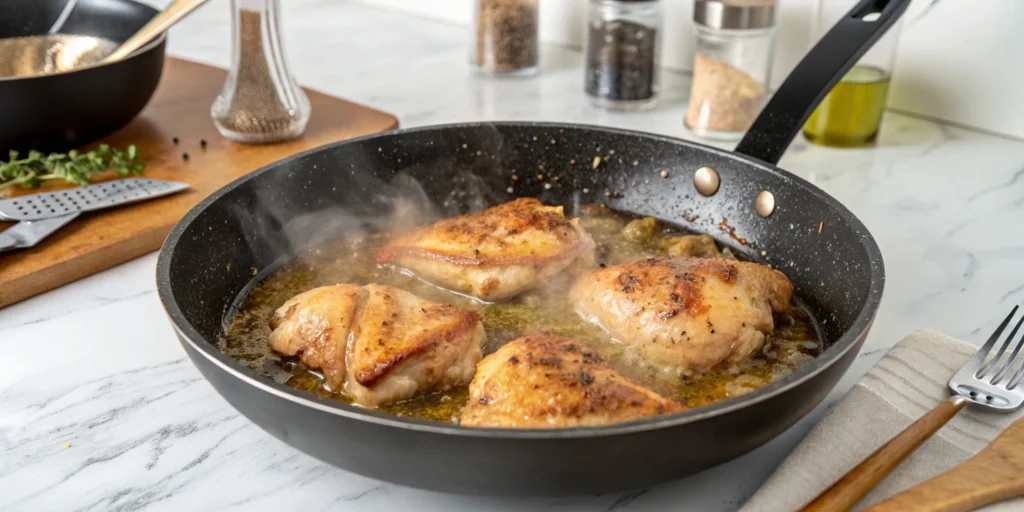
Step 3: Assemble the Wraps
While the chicken cooks, prepare the lettuce leaves by washing them thoroughly and patting them dry. Place the lettuce leaves on a large dish or platter. After cooking the chicken, take it out of the pan and set it aside. In the same pan, quickly sauté your choice of vegetables—carrots, cucumbers, and bell peppers—for just 1-2 minutes, so they stay crisp and fresh.
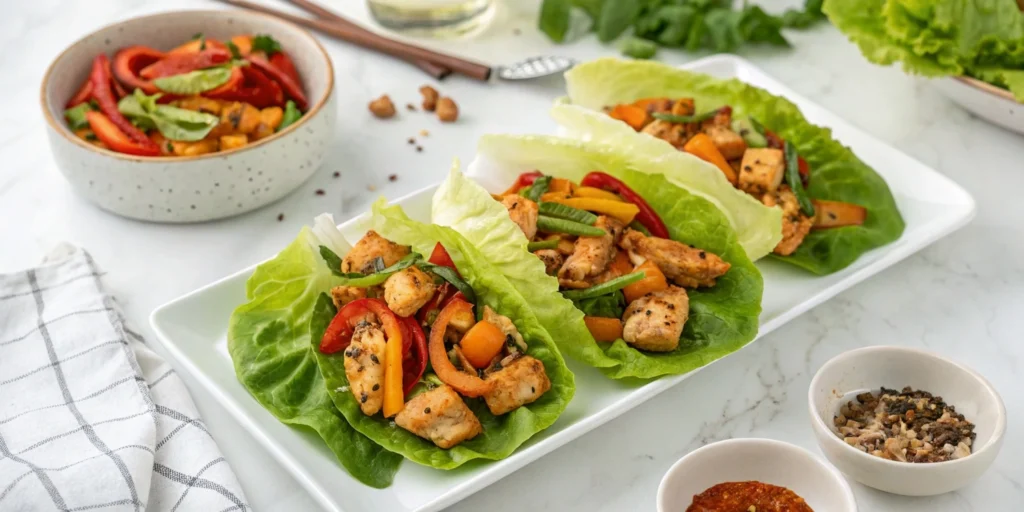
Now, it’s time to assemble your wraps. Take a lettuce leaf, spoon a generous amount of cooked chicken onto the center, and top with the sautéed vegetables. You can also add kimchi or sesame seeds if desired.
Step 4: Serve and Enjoy
Serve the wraps immediately, while the chicken is still warm and the lettuce remains fresh and crisp. You can wrap them tightly or fold them like tacos, then take a big bite and enjoy the explosion of flavors!
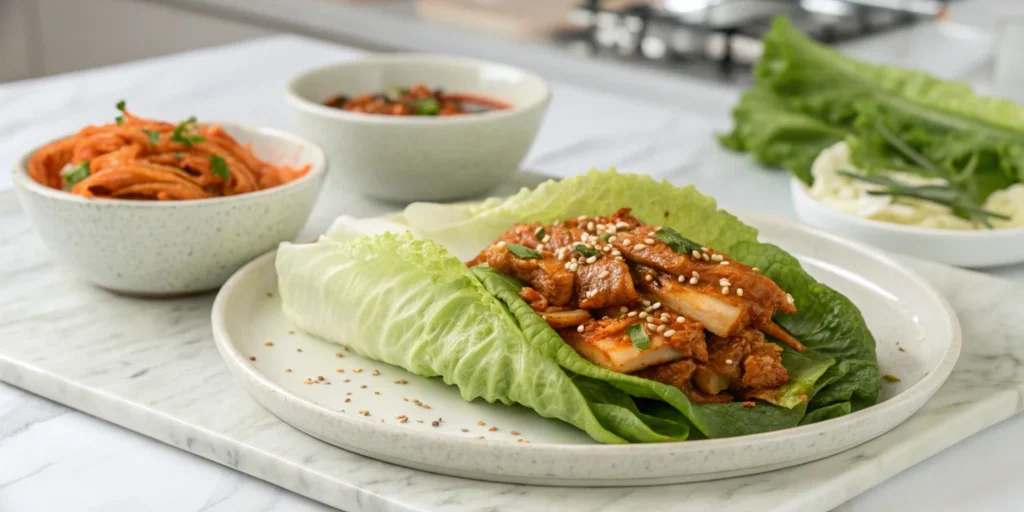
Nutritional Benefits of Dakgalbi Wraps
The Dakgalbi Wrap isn’t just delicious—it’s also packed with health benefits. Here’s a breakdown of what’s good about this dish:
- Rich in Protein: Chicken provides an excellent source of lean protein, supporting muscle growth and repair. It’s also packed with iron, which plays a crucial role in transporting oxygen throughout the body.
- Rich in Vitamins and Antioxidants: The fresh veggies in the wraps add a variety of essential nutrients, including vitamin A (for eye health), vitamin K (for bone health), and antioxidants (for immune support).
- Low in Carbs: By swapping out rice or noodles for lettuce, you’re cutting down on carbs, making this dish a great option for those following a keto, low-carb, or gluten-free diet.
- Good Fats: Sesame oil provides healthy fats that support heart health and help with the absorption of fat-soluble vitamins.
Variations on the Dakgalbi Wrap
One of the best things about Dakgalbi Wraps is their versatility. Here are some fun variations you can try:
Vegetarian Dakgalbi Wrap
If you’re vegetarian or want to switch things up, simply replace the chicken with tofu, mushrooms, or tempeh. These plant-based proteins absorb the marinade beautifully and add a savory, umami flavor to the dish.
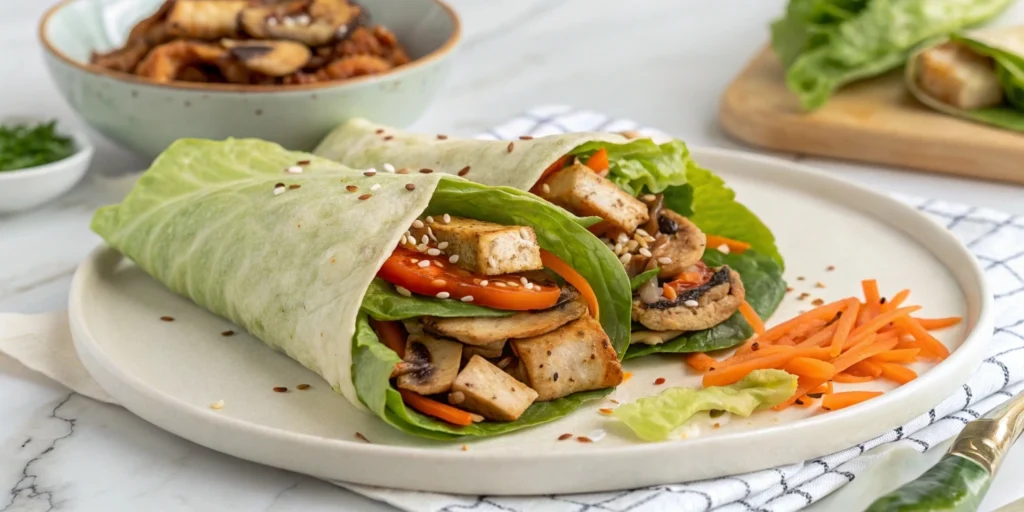
Spicy Dakgalbi Wrap
If you love extra heat, increase the amount of gochujang in the marinade. You can also add some sliced fresh chilies to the wrap itself to turn up the spice level.
Dakgalbi with Rice Cakes
Traditional dakgalbi often includes chewy rice cakes (tteok), which add texture and additional flavor. You can easily incorporate these into your wraps by lightly pan-frying them before adding them to the lettuce.
FAQs About Dakgalbi Wraps
What are some alternatives to lettuce for wraps?
You can substitute lettuce with cabbage leaves or collard greens if you prefer a sturdier wrap. These options are also low-carb and provide a nice crunch.
Is dakgalbi wrap spicy?
Yes, dakgalbi is traditionally spicy due to the gochujang. However, you can control the heat by adjusting the amount of gochujang or using a mild version of the paste.
Can I make dakgalbi wraps ahead of time?
While the chicken can be marinated ahead of time, it’s best to assemble the wraps right before serving to keep the lettuce fresh and crisp.
How many calories are in a dakgalbi wrap?
A single dakgalbi wrap, with chicken and vegetables, typically contains around 250-300 calories, depending on the size of the wrap and any additional toppings you choose.
Conclusion: Your New Favorite Wrap Awaits
Now that you know how to make Dakgalbi Wraps, it’s time to try them for yourself. This flavorful, healthy dish will soon become a favorite in your kitchen, whether you’re enjoying it on a busy weeknight or serving it at your next gathering. The combination of spicy chicken, fresh veggies, and crunchy lettuce is truly unbeatable.
So, grab some fresh lettuce, gather your ingredients, and get cooking. Don’t forget to share your creations with me on social media—I’d love to see how you customize your Dakgalbi Wraps!
